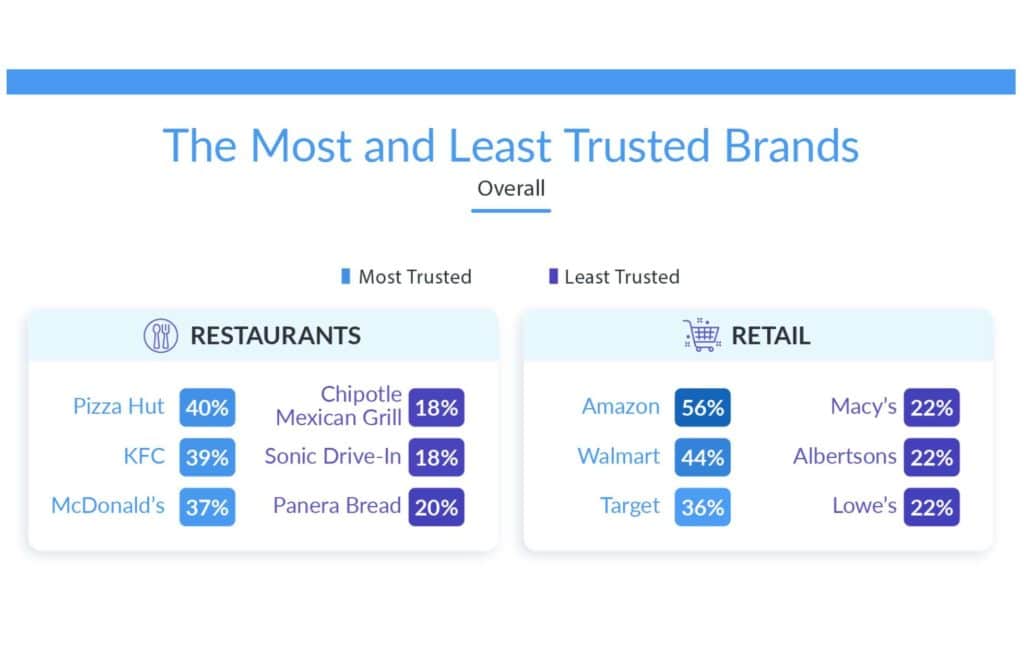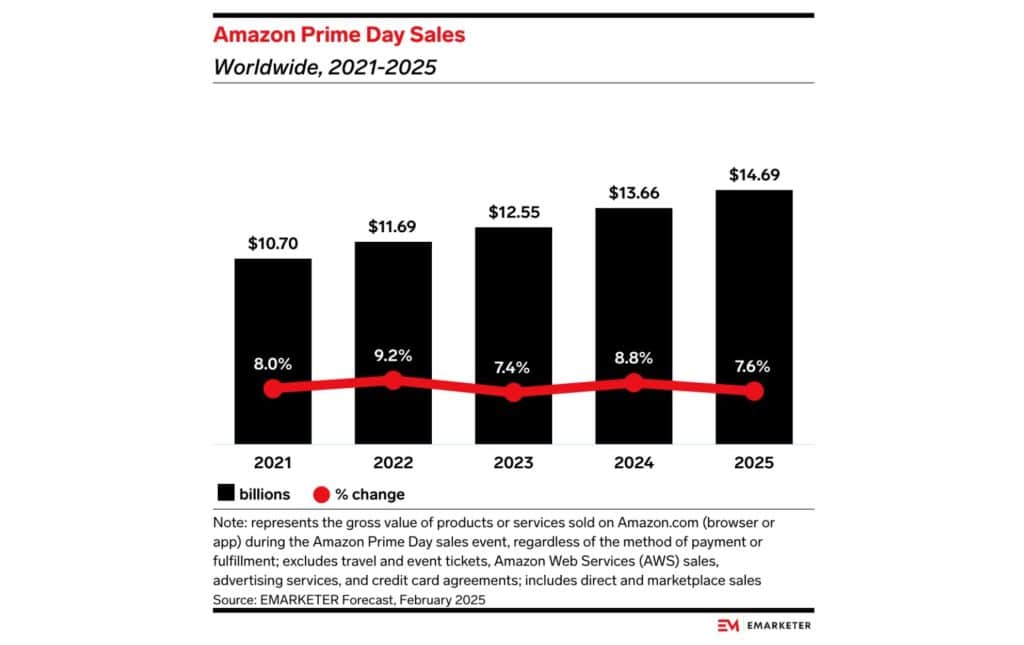Setting Up a Direct Relationship with Amazon
Setting up a direct relationship with Amazon means partnering with one of the world’s most trusted retailers. In fact, more than 56% of consumers name Amazon as their most trusted retail brand, far ahead of Walmart and Target.

That trust translates into buying confidence, and when your products carry the “Ships from Amazon” label, your brand shares in that credibility.
However, this kind of partnership isn’t as simple as flipping a switch. It requires an invitation to Vendor Central, clear supply agreements, and a readiness to manage everything from purchase orders to direct fulfillment.
Let’s unpack the basics of having a direct retail relationship with Amazon, and everything you need to know about building and fostering a vendor partnership.
What is a Direct Relationship with Amazon?
A direct relationship with Amazon means your brand sells products wholesale to Amazon itself, instead of going through Seller Central.
In this setup, Amazon becomes your customer. They place purchase orders, buy your products in bulk, and then resell them under the familiar “Ships from Amazon” label, just like the product page below:

At its core, a direct relationship is built on a direct sourcing approach. Rather than relying on layers of distributors or resellers, your brand negotiates directly with Amazon’s retail team. This shortens the supply chain, strengthens oversight of products’ presentation, and can open doors to better visibility.
However, it also comes with responsibilities:
- Meeting strict compliance standards
- Managing vendor agreements
- Ensuring you can supply Amazon reliably
For brands with established operations and a reliable production pipeline, this model can be a strategic move. It provides access to Amazon’s massive customer base while positioning your products as part of its trusted retail catalog.
Amazon Vendor Central
For most brands, the first step in forming a direct relationship with Amazon is through Vendor Central. Unlike Seller Central, where you manage listings and sell directly to consumers, Vendor Central is an invite-only platform designed for wholesale partnerships.
That said, when Amazon brings you on board, you don’t just list products—you become a supplier to Amazon Retail. Here’s how it works:
- Amazon issues purchase orders (POs) for your products
- You ship the inventory.
- Amazon handles pricing, customer transactions, and shipping under its own name.
While the opportunity is huge, access isn’t automatic. Vendor Central is highly selective, often extending to brands that meet specific requirements, including:
- Proven demand
- Strong supply chains
- Products that align with Amazon’s retail strategy
This gateway also opens the door to direct supply agreements, where your brand and Amazon establish terms around pricing, delivery, and fulfillment.
These agreements form the backbone of your vendor partnership. They set expectations not only for product availability but also for performance metrics, such as on-time shipments and defect rates.
Amazon Direct Fulfillment
A direct relationship with Amazon starts with Vendor Central, but not every product you sell has to move through Amazon’s warehouses. That’s where direct fulfillment comes in.
Direct Fulfillment is a program inside Vendor Central that changes how orders are shipped. Instead of sending bulk stock to Amazon’s fulfillment centers, you ship customer orders directly from your warehouse.
The customer still sees “Ships from Amazon,” but your team handles the pick, pack, and ship. It’s a way to scale faster while maintaining the credibility of a direct retail relationship with Amazon.
Direct Fulfillment gives brands more flexibility. You can expand your catalog without overcommitting inventory, test new SKUs, and quickly respond to seasonal demand or bulky product orders.
The payoff can be big. Take Amazon Prime Day: in 2024, global sales hit $13.66 billion, with forecasts of nearly $14.7 billion in 2025.

That kind of surge means you can get products in front of shoppers right when demand peaks, without waiting for Amazon to place another bulk purchase order.
The trade-off is responsibility. Direct fulfillment requires you to meet Amazon’s strict standards for packaging, delivery speed, and accuracy. Late shipments or high cancellation rates can put your Vendor Central status at risk.
Why Consider a Direct Relationship
Partnering with Amazon can transform how a brand reaches customers, while offering advantages that go beyond third-party selling.
Instant Trust and Visibility
Trust is the currency of online retail. Research shows that 81% of consumers need to trust a brand before they’ll consider buying from it, which makes Amazon’s credibility a powerful advantage.

When your products carry the “Ships from Amazon” label, shoppers associate that trust with your brand. Instead of questioning reliability, they’re reassured by Amazon’s reputation, giving you a stronger foothold in competitive categories.
Related content: How Ethical Sourcing Builds Trust
Scale and Reach
Amazon already commands one of the largest retail audiences in the world. A direct relationship plugs your products directly into that pipeline. The Amazon Retail brand helps your catalog reach millions of active buyers overnight.
Flexibility for Product Launches
Through Vendor Central and programs like direct fulfillment, brands can introduce new SKUs without overcommitting inventory. This is particularly valuable for seasonal or experimental products, where testing demand quickly is better than tying up resources in bulk orders.
Reduced Operational Risk in Some Cases
Amazon takes on the role of retailer, which means you’re not directly responsible for customer service, returns, or end-to-end transactions. This allows brands to focus on supply chain efficiency while still benefiting from Amazon’s distribution power.
Margins can be thinner, though, and vendors must meet strict standards for on-time shipment, compliance, and key performance metrics.
However, for brands ready to operate at scale, the opportunity to partner directly with Amazon can outweigh the risks.
Hybrid Approach
Many successful companies blend Vendor Central with Seller Central, or mix direct fulfillment with bulk shipments to Amazon’s warehouses. The goal is to balance several factors, including:
- Flexibility
- Control
- Profitability
Here’s an example of how a business may use various models for maximum impact:
- Vendor Central for fast-moving consumer goods where purchase orders keep shelves stocked.
- Direct fulfillment for bulky or seasonal products that don’t make sense to warehouse in large volumes.
- Seller Central as a testing ground for new SKUs, giving brands the chance to measure demand before negotiating a wholesale deal.
Hybrid models also reduce risk. If Amazon lowers purchase orders on a certain item, Seller Central or direct fulfillment can keep the product available without disrupting sales.
Some brands even lean on third-party logistics (3PL) partners to manage these moving pieces, ensuring inventory is optimized across multiple channels.
Sustaining a Vendor Partnership
Securing a direct relationship with Amazon is only the beginning. The real challenge is keeping that partnership strong and profitable. Vendors that thrive with Amazon share a few common practices:
Stay on Top of Compliance
Amazon sets strict requirements for packaging, labeling, and shipping. Even small lapses can trigger penalties or impact your Vendor Central standing. Regular audits of your processes ensure you remain compliant and protect your vendor reputation.
Prioritize Performance Metrics
Amazon closely monitors KPIs like:
- On-time shipment rates
- Defect rates
- Order cancellations
That said, you must treat these as critical KPIs. Missing targets not only risks short-term penalties but can also limit the number of purchase orders Amazon places with you.
Manage Profitability
Margins in a direct relationship can be tighter than selling through Seller Central. Track freight costs, packaging, returns, and allowances to make sure your partnership remains sustainable. Many brands review these numbers monthly to avoid surprises.
Invest in Strong Communication
Maintain an open line with your Amazon Vendor Manager. Clear communication helps resolve issues faster, keeps you aligned with Amazon’s retail strategy, and can even unlock growth opportunities like promotional placements.
The Lowdown
Building a direct relationship with Amazon demands readiness, compliance, and ongoing attention. Many brands choose to partner with specialists like AMZ Advisers, who focus on optimizing product listings, negotiating vendor agreements, and improving overall profitability.
Brands that thrive are the ones that treat Amazon not just as a sales channel, but as a long-term retail partner. Having an experienced partner ensures your brand stays competitive while freeing up your internal team to focus on product development and long-term growth.
The post Setting Up a Direct Relationship with Amazon appeared first on AMZ Advisers.


